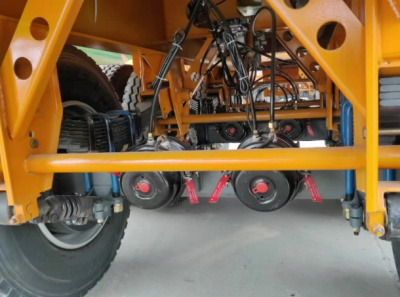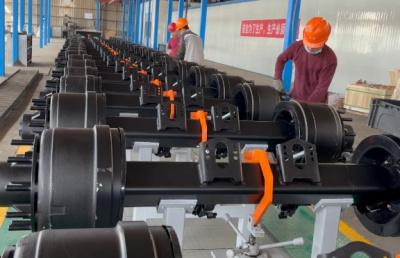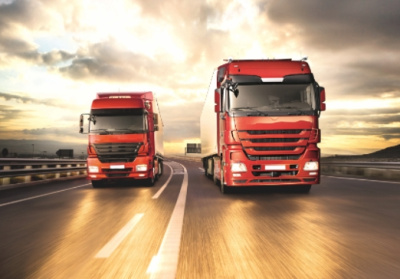How many kinds of new energy heavy truck power methods?
With the increasing attention of the state to environmental protection in recent years, heavy diesel vehicles have gradually become the focus of attention of relevant departments, and the new energy of vehicle energy has become a trend, and many heavy truck brands have begun to enter the field of new energy.
According to relevant statistics, the sales of new energy heavy trucks in the first half of 2022 are rising, in stark contrast to traditional fuel heavy trucks, and the sales of new energy tractors in only January to May rose from 46.4% to 60.2%, and the market share increased by 14.1 percentage points.
What are the main ways of driving new energy heavy trucks? Then we'll take a look with the DARO trailer axle.
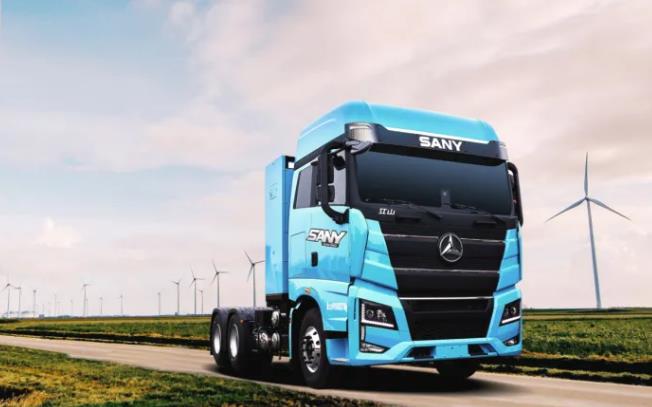
First, electric heavy truck
Electric heavy trucks refer to heavy trucks powered by electricity instead of traditional fuel.
Under the current premise of high fuel prices, the operation cost of electric vehicles has decreased to a certain extent, and the energy consumption cost is about one-third of that of fuel vehicles, and the economic benefits are relatively obvious. In addition, in terms of emissions, due to the replacement of fuel drive, vehicles can basically achieve zero emissions, and environmental benefits are considerable.
In addition, electric drive can also achieve noise reduction, convenient shift, vibration reduction and other advantages, improve the driving environment, to a certain extent, is also more conducive to the protection of goods. At the same time, vehicle data is easier to collect and upload, which is convenient to further graft technical services, optimize energy supply in the transportation field, and realize the application of unmanned technology.
Electric heavy trucks can be subdivided into three types: charging type, changing type and fuel cell type:
1. Rechargeable type:
The plug-in vehicle is loaded with power batteries and relies on external charging piles for power supplement.
Generally speaking, the slow charge time of an electric heavy truck takes about a few hours, and the fast charge also takes nearly an hour, so the charging speed and efficiency are the main bottlenecks restricting its development.
In addition, at present, the charging pile in many cities is not sufficient, even the charging of new energy passenger cars is not particularly convenient, especially on the highway, there are almost no charging piles, which also forms a certain obstacle to the popularity of electric heavy trucks.
2. Power change type trailer axle:
The electric-replacement vehicle adopts the vehicle-electric separation mode and relies on the external changing station to replace the battery.
Compared with the charging vehicle, the replacement heavy truck greatly reduces the charging time, and the owner can directly replace the battery at the replacement station, which is relatively faster. However, the construction of the power station has relatively high requirements for the site, technology and cost, and there is a certain difficulty in popularization.
However, we need to see that under the collective exploration of the upstream and downstream of the industry, the barriers to electricity replacement are gradually being overcome, and the number of charging and replacing power stations is also rising.
3. Fuel cell type:
Fuel cell type heavy truck, in fact, can also be counted as an electric model, unlike ordinary vehicle batteries, fuel cells can be refueled, generally supplemented with hydrogen, fuel cells can be filled in a few minutes, compared to the shutdown for several hours for charging, fuel cells are much faster.
Fuel cell heavy truck essentially belongs to a zero-emission model, especially when pure hydrogen is used as fuel, the exhaust gas generated is water, even if other hydrogen-rich organic compounds are used, the pollutants in the exhaust gas are greatly reduced, and the environmental benefits are not to be said.
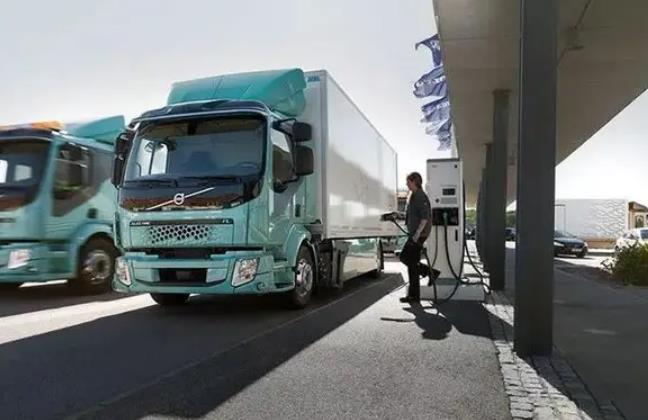
At the same time, the energy conversion efficiency of fuel cells is extremely high, almost 2-3 times that of ordinary internal combustion engines, higher mileage, more energy saving and environmental protection. The hydrogen fuel used in fuel cells can be obtained from a wide range of sources, even from renewable energy sources, reducing dependence on petroleum resources and optimizing the composition of transportation energy.
However, compared with ordinary vehicle batteries, fuel cells have a more complex structure and higher technical requirements.
If you put aside the difference in the way of replenishment, simply from the level of electric heavy trucks, in order to achieve large-scale application of electric heavy trucks, the following problems need to be solved trailer axle:
1. The vehicle is heavy. Because most heavy trucks are used in the freight field, some of them also need to be used as tractors to provide driving force for semi-trailers, so the battery life requirements are relatively high. Correspondingly, the heavy truck is generally larger with the weight of the battery, and can even weigh about 3t more than the fuel vehicle of the same specification. This is almost the opposite of the current industry trend of lightweight.
2. Limited range. This is also one of the constraints of most electric heavy trucks, especially for medium and long-distance freight owners, the battery life is directly related to the transportation efficiency, if the need for frequent charging halfway, but not as convenient as fuel vehicles.
3. The cost of buying a car is too high. As a relatively new model, the price of electric heavy trucks is higher than that of traditional fuel heavy trucks, which also dissuaded some owners to a certain extent. It is worth noting that, under the dual promotion of policies and international trends, more and more car purchase benefits have been introduced, which may also solve this problem to a certain extent.
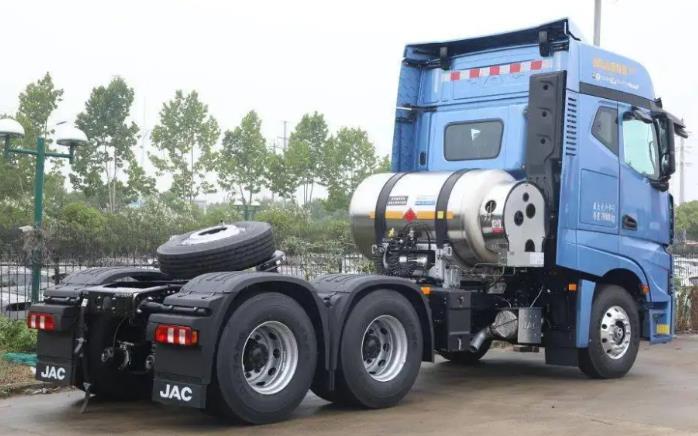
Second, natural gas heavy truck
Natural gas heavy truck refers to a type of vehicle that is fueled by natural gas and alternative fuel, and its fuel can generally be divided into LNG (liquefied natural gas) or CNG (compressed natural gas).
First, natural gas heavy truck advantages:
1. Cheaper fuel. In general, natural gas is cheaper than diesel. Under the current condition of rising fuel unit price, the vehicle fuel alone, natural gas heavy trucks can save a lot than traditional fuel vehicles.
2. Protect the engine. The combustion of natural gas in the engine is more complete and clean, and it is not easy to produce carbon deposit, which can greatly reduce the degree of wear of the parts in the engine cylinder, extend the service life of the engine, and reduce the maintenance or repair costs of the vehicle.
3, low temperature starting performance is better. Especially the owners of the northern cities of our country, the morning out of the car does not need to hot car baking car, unlike diesel will freeze.
4, more environmentally friendly. Needless to say, as a new energy heavy truck, this is the most basic point.
5, not afraid of "gas rats" steal oil. Natural gas is not want to steal can steal away, the owner is tired can directly stop to rest, no longer worry about fuel stolen, also do not sleep on the tank in the cold.
Second, the disadvantages of natural gas heavy truck:
1, the filling station coverage is poor. At present, the coverage rate of filling stations in China is far less than that of gas stations, once the owner runs the line far away, it is necessary to calculate the fuel mileage at all times and plan the route.
2, the price of natural gas heavy truck is high. It has to be admitted that the price of natural gas heavy trucks is generally higher than that of fuel vehicles. Even if the modification, replacement of the engine, installation of gas storage tanks, pressure reducing valves, mixers, etc., the price probably needs tens of thousands of pieces.
3, high maintenance costs. According to some owners, natural gas heavy truck repair will cost at least one thousand pieces, and the maintenance cost is higher.
4. Lack of power. Especially at present, most of the natural gas heavy truck engine is modified from the original diesel engine, and the power will often drop by about 10%-20% after switching to natural gas, which to a certain extent leads to the phenomenon that the owner says that the climb is boring and the acceleration response is slow.
5, not suitable for long-distance transportation. After the fuel heavy truck tank is filled up, it is basically not a problem to run more than one or two thousand kilometers, but the same specification of natural gas heavy truck can run about a few hundred kilometers even if it is full, and this distance is not a little bit different.
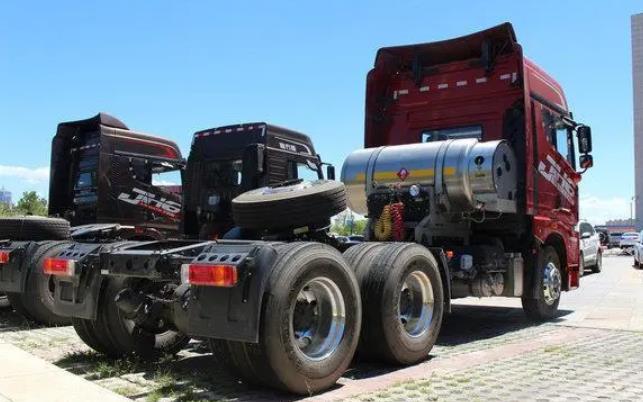
On the whole, the production technology of natural gas heavy truck is relatively mature, and it has been widely used in short-haul transportation and some long-distance transportation lines in different scenarios. In contrast, electric heavy trucks are currently more active in urban distribution, port transport and other closed transport scenarios.
Of course, there are still some hybrid heavy trucks in the current market, such as gas-electric hybrid, plug-in hybrid, extend-range electric, dual-fuel natural gas heavy trucks, these models can reduce exhaust pollution to a certain extent, but also can make up for the lack of new energy power or driving range, which has won the favor of many owners. It is worth noting that after all, hybrid power does not get rid of the dependence on traditional energy, after all, is a transitional form, and the ultimate goal is still to achieve zero emissions of new energy.
Although there are still many technical problems that need to be solved at this stage, it is undeniable that energy saving and emission reduction and environmental protection are international trends, many regions have introduced relevant policies to limit the number of fuel heavy trucks and carbon emissions, therefore, heavy trucks new energy is the trend of The Times, with the continuous improvement of related technologies, its application scenarios will be more and more extensive.




